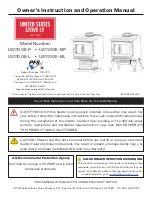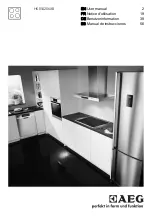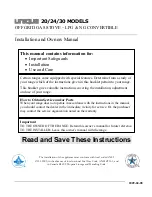
4. Using the air-control slide in conjunction
with the throttle flap, you can regulate
the residual burning.
2. Light the stove with paper, cardboard
or firelighters and small wood. Stack
lightly. Maintain a good fire for a while.
This will ensure a good draught, will
keep the flue cleaner, and will give you
a nice fire for the solid logs.
5. A quietly burning fire is obtained by:
- closing the air-control slide further
(pushing it to the left),
- closing the throttle flap further.
That way you are actually controlling the
draught in the stove.
For a glowing mass of charcoal, you may
close the air-control slide even further.
This way will enjoy the heat longer.
3. Add solid logs. The amount depends on
the heat needed. Stack lightly. Each
time you add fuel, do not load more
than up to 1/3 of the combustion cham-
ber. Each time you have added a load,
give the fire some extra oxygen. Keep
doing this until the fuel is burning pro-
perly.
1. Open the air-control slide completely
(pushed to the right). Put the throttle
flap in the opened position (the position
of the handle corresponds to the positi-
on of the throttle flap). For additional
draught, set the window at the top ajar.
How to use the HL2 and HL4
A few tips
•
Always keep a fire on a bed of ashes. This is an insulating layer for the fire and also an excellent bed for the fuel.
•
If you have overloaded the stove and the oxygen supply is at its maximum (air-control slide and throttle flap opened completely), the fire
may ‘run wild’. In this case never leave the stove unattended. You could open the window completely, thus cooling the fire.
•
You also control the temperature by the amount and the kind of fuel you add each time.
•
Remove the surplus of ashes with a scoop or an Ash cleaner. Never use a vacuum cleaner because a fire may still glow after extinction
for days. Ensure that a layer of ashes (+ 3 cm) is left for your next fire.
•
When the weather is foggy, preferably, do not use the stove for the draught in the flue will be too low.
•
The stove is burning well when the refractory ceramic elements are grey or lightly sooted, and the window stays clean.
The power of fire
As a matter of fact just a few things withstand a real hot fire. Your stove can also be damaged by overheating. Just to prevent this take
account of not burning more than 3 kilograms of wood at the same time. 3 Kilograms is approximately equal to 3 massif logs; oak with
15% moisture. The construction and the used materials from the stove are suchlike chosen to control and resist a fire in a considered way.
So heat with consideration. (For the HL4, this is 4 kg of dry wood.)
1. kindling wood
2. thicker wood
3. solid log
Preferred order of wood thicknesses to be used when you start burning the stove.
1. Dust the stove using a non-fibrous cloth. Clean with lean soapsuds if necessary.
2. Damaged spots can be touched up using an abrasive cloth and the special Harrie Leenders stove paint.
Ask you supplier for advice.
Maintenance enamelled parts
Maintenance ceramic firebricks
You need not worry about any cracks in the ceramic firebrick elements as long as the flame does not come into direct contact with the
metal behind them. Should this be the case, however, then it will be necessary to replace the brick; contact your supplier.
Maintenance
Maintenance glass
Maintenance moving parts
Use paper towel and then remove the light moisture using a damp cloth.
Thicker deposits can be treated with special stove-glass cleaner (this can also be done with a piece of moist paper
towel and white ash). Always ensure that these agents do not come into contact with the paint or your floor to avoid
damaging it.
Moving and squeaking parts can be lubricated with graphite grease or copper grease. Contact your dealer for advice.
The glass is steamed up when burning wet fuel or too little oxygen is supplied. Also, the glass may steam up if the fire does not start fier-
cely enough. This happens, for instance, when you start with small logs instead of thin kindling wood. Moisture will then remain in the
stove for too long, and will settle on the coldest part: the glass.
Sweeping the chimney
Have your flue inspected once a year by a recognized chimney sweeping firm. Before the flue is swept, the heat shield must be tipped up.
Afterwards ensure that the heat shield is replaced correctly. If not, the heat shield may get warped.
10
11
In conclusion
Ensure that the flue is kept clean, the correct dry fuel is used, and operate the stove sensibly for proper burning behaviour.
That way you will derive most pleasure from your stove. We wish you much warmth and heating pleasure.







































